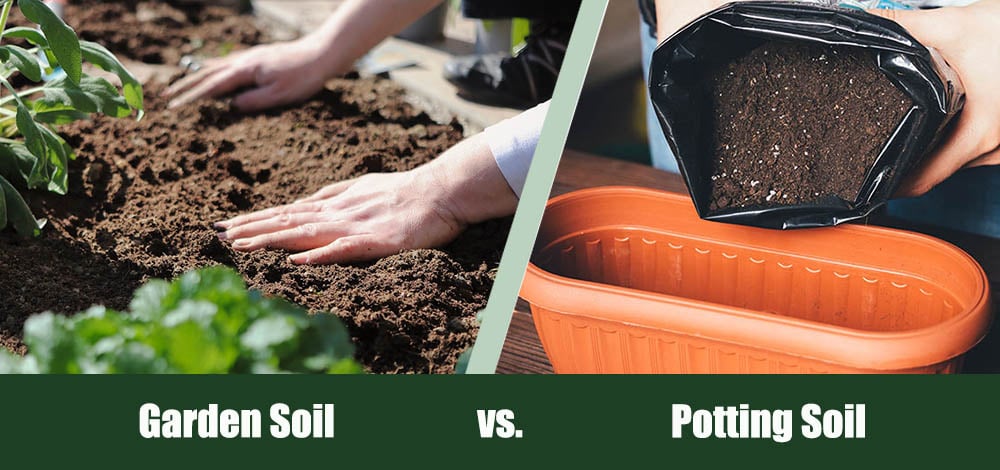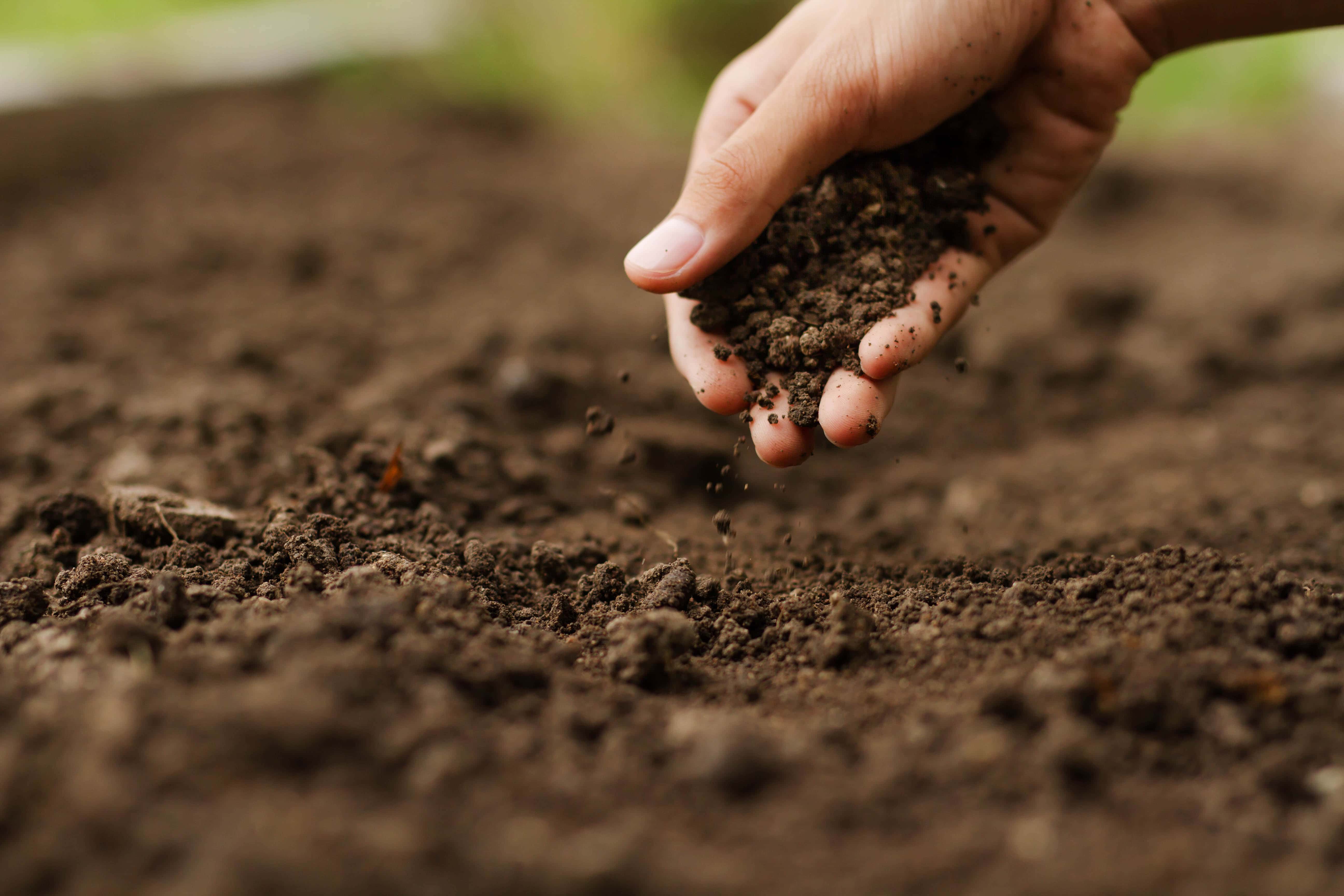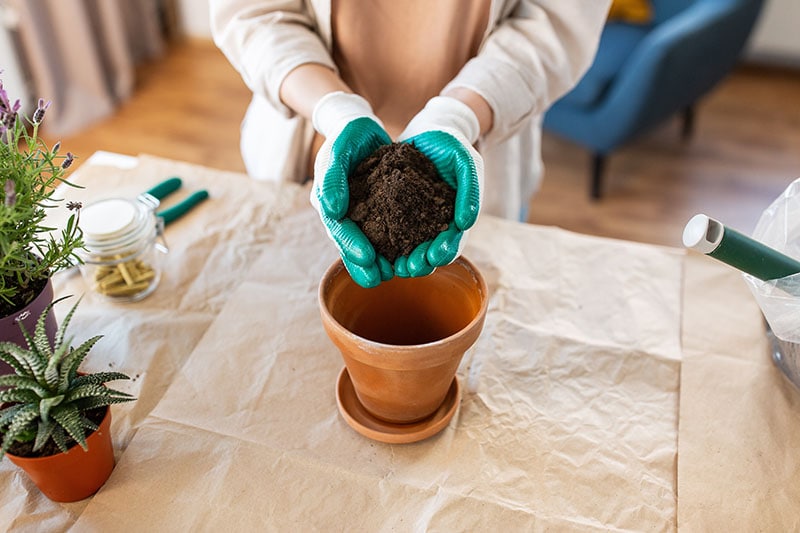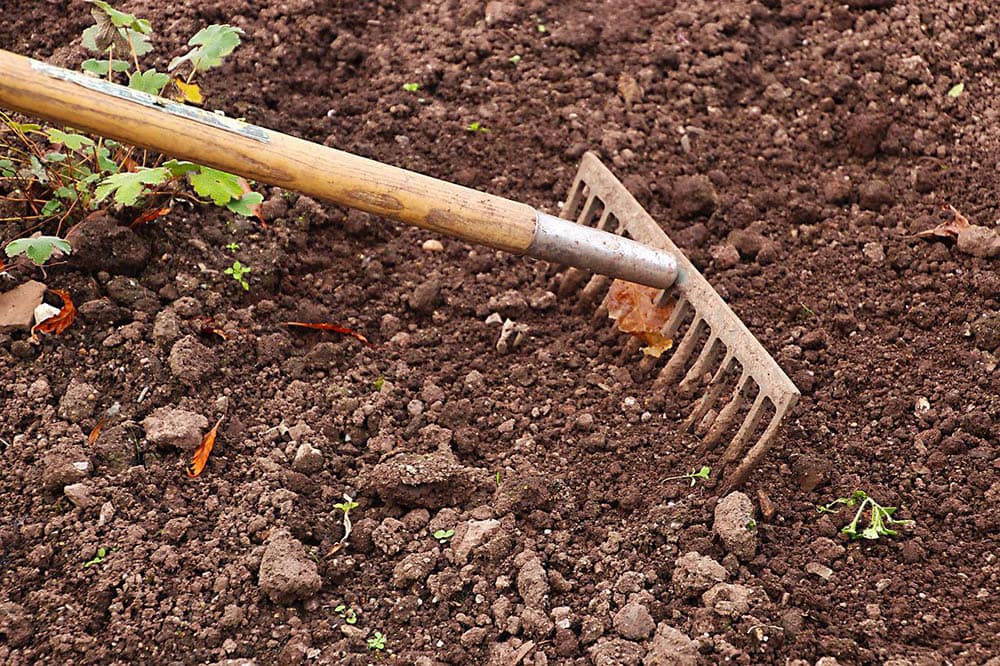Garden Soil Vs. Potting Soil: Pros, Cons, Differences, & FAQ
-
Brooke Bundy
- Last updated:

As you gaze at the mounds of soil that line the aisles at your local nursery, you may feel the urge to plop a bag in your cart and move on. After all, dirt is dirt, and plants growing in nature seem to thrive without special potting mixes. Does it even matter whether you have garden soil or potting soil? Though the difference is subtle in verbiage, there is a vital difference between garden soil and potting soil in practice. You should only use garden soil in the ground and potting soil in containers due to their nature.
Overview of Garden Soil
Garden soil is composed of topsoil (AKA dirt) mixed with organic materials such as compost that feed plants. It tends to be denser than potting soil and should only be used when you’re planting in the ground. At that point, you might wonder why you shouldn’t simply plant your flowers in the ground since that dirt is free. However, most yards aren’t equipped with the perfect soil for growing plants, whether they’re packed like clay or coarse like sand. Garden soil amends the dirt that’s already there, giving it extra nutrients and changing the texture so that it retains more water than sand while not packing like clay. This optimizes the ground for your plants to grow freely as they feed from the compost and grow through the improved dirt.

Why Can’t I Use Garden Soil in My Container Garden?
Since garden soil is cheaper than potting soil and potting mix, you might be tempted to pour it into your pots on the porch. This isn’t a good idea, though. Garden soil packs easier than potting soil and will choke out the roots. Thus, even though garden soil is more economical than potting soil, they aren’t interchangeable. Don’t settle for garden soil for your container garden. You’ll only save a little at the expense of your plants.
- Good for improving existing soil
- Designed for in-ground plants
- Too dense for potted plants
Overview of Potting Soil
Potting soil is a sterile medium featuring peat moss, perlite, vermiculite, pumice, sand, sphagnum moss, or other airy materials such as coconut coir. These materials keep the “dirt” from compacting and choking out the roots. Depending on the formula, potting soil might not actually contain any soil. Potting mix in particular doesn’t have any dirt. The mixture is usually sterile so that fungi and bacteria don’t grow. Moss, compost, or fertilizer may be included in the formula to feed the plant as it grows, but you’ll have to add more fertilizer once or twice a year.
Different types of potting mixes may be formulated especially for specific plants. For example, orchid mix is predominately made out of wood chips, which is the ideal growing medium for that flower.

Why Can’t I Use Potting Soil in My Garden?
Potting soil and potting mix aren’t as nutritionally rich as garden soil and shouldn’t be used in a garden bed. Plus, since it’s more expensive than garden soil, you really wouldn’t want to anyway.
- Formulated to keep roots from compacting in container gardens and potted plants
- Sterile in order to prevent disease
- Specific types for certain plants
- Not fortified enough nutritionally to use in garden beds
- More expensive than garden soil
- Needs regular fertilizer
What About Topsoil?
Another type of soil you’ll probably find is dirt cheap, but not meant for growing plants. Topsoil is literally plain dirt. It’s an inexpensive way to fill holes in your yard, but it’s simply not what you need to start your garden.
If you’re wanting to save money, you can use topsoil to make your own homemade potting mix. You’ll need to sterilize it first by baking it in an oven until it reaches 200°F. Don’t let the temperature climb higher than that, or you’ll risk releasing pathogens from the soil. Once it cools, mix it with equal parts sand, perlite, or vermiculite to break it up, and peat moss to give your soil some nutrition.

Which Type of Soil Should I Use?
Now that you know not all soil is created equal, here’s a breakdown of how to choose which type best fits your project:
- Creating an in-ground flower bed
- Planting vegetables in the ground
- Breaking up clay soil
- Improving water retention in sandy areas
- Starting seeds
- Planting in pots or containers
- Caring for plants with special needs
Conclusion
Garden soil and potting soil aren’t the same and shouldn’t be used interchangeably. When you’re planting in the ground, garden soil is the best choice since it improves the existing soil by changing the texture and adding nutrients. It’s also cheaper and more natural than potting soil, which is one reason why planting in-ground is a better choice for you and your plants.
Potting soil is what you want when you’re planting in an enclosed space, such as a pot or container. Since it’s mixed with perlite or vermiculite, it won’t compact when you water it nearly as badly as garden soil. Plus, it’s sterilized, so you don’t have to worry about pathogens from the dirt making their way into your plants—if there’s even dirt at all. Although some nutrients are usually included in the form of peat moss, compost, or fertilizer, you’ll need to re-fertilize your potted plants occasionally since it’s not as nutritionally dense as garden soil.
Finally, while you can’t use straight topsoil to grow plants since it’s simply dirt, you can use it to make your own homemade potting soil if you’re on a budget.
- You Might Also Be Interested In: Does Costco Carry Potting Soil?
- https://homeguides.sfgate.com/use-topsoil-potting-mixture-75220.html
- https://askgardening.com/potting-soil-vs-compost/
- https://www.gardendesign.com/how-to/potting-soil.html
- https://www.hgtv.com/outdoors/gardens/planting-and-maintenance/what-is-difference-between-potting-soil-garden-soil
- https://www.bobvila.com/articles/garden-soil-vs-potting-soil/
Featured Image Credit: (L) Alexander Fox | PlaNet Fox, Pixabay | (R) progressman, Shutterstock
Contents

